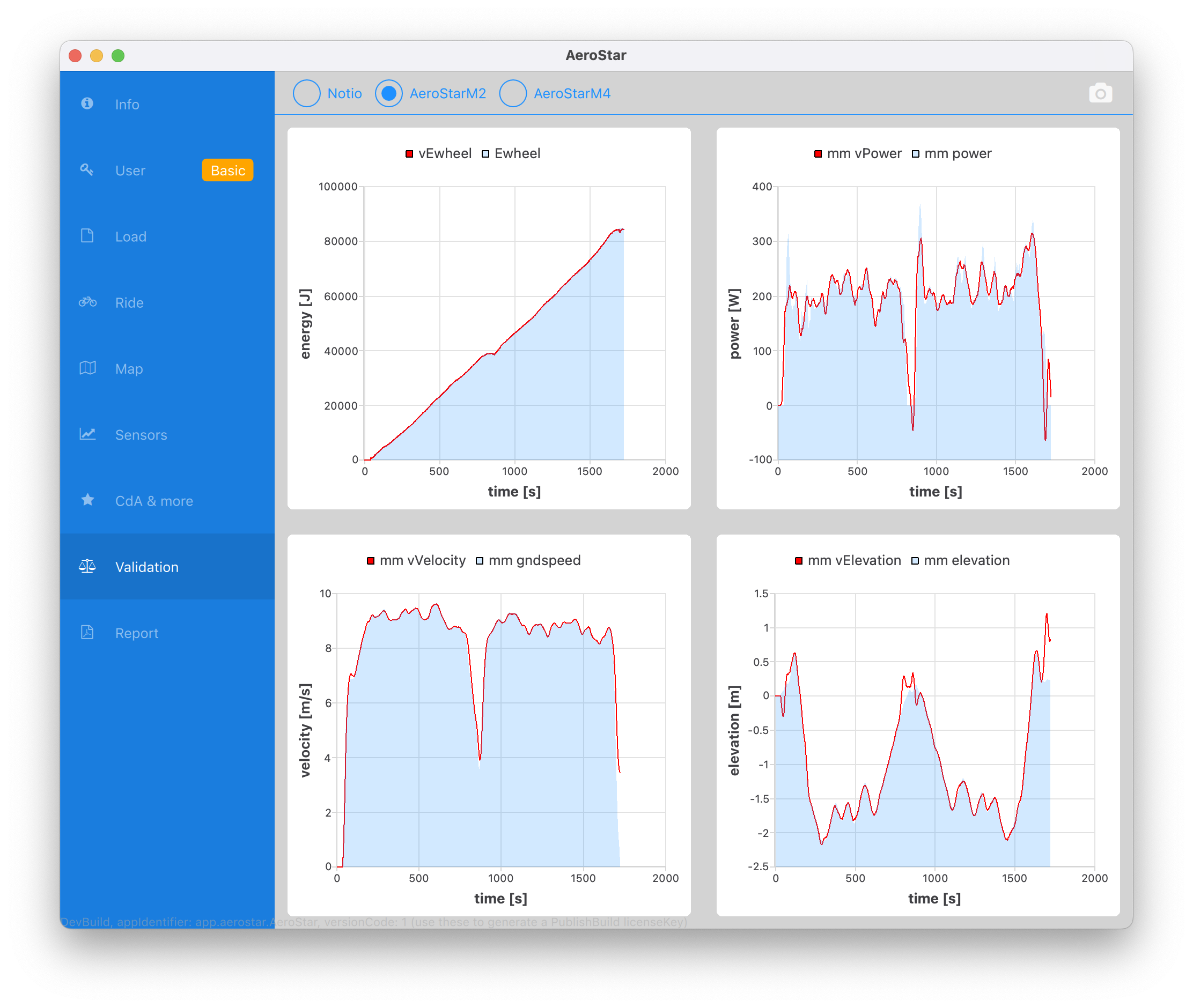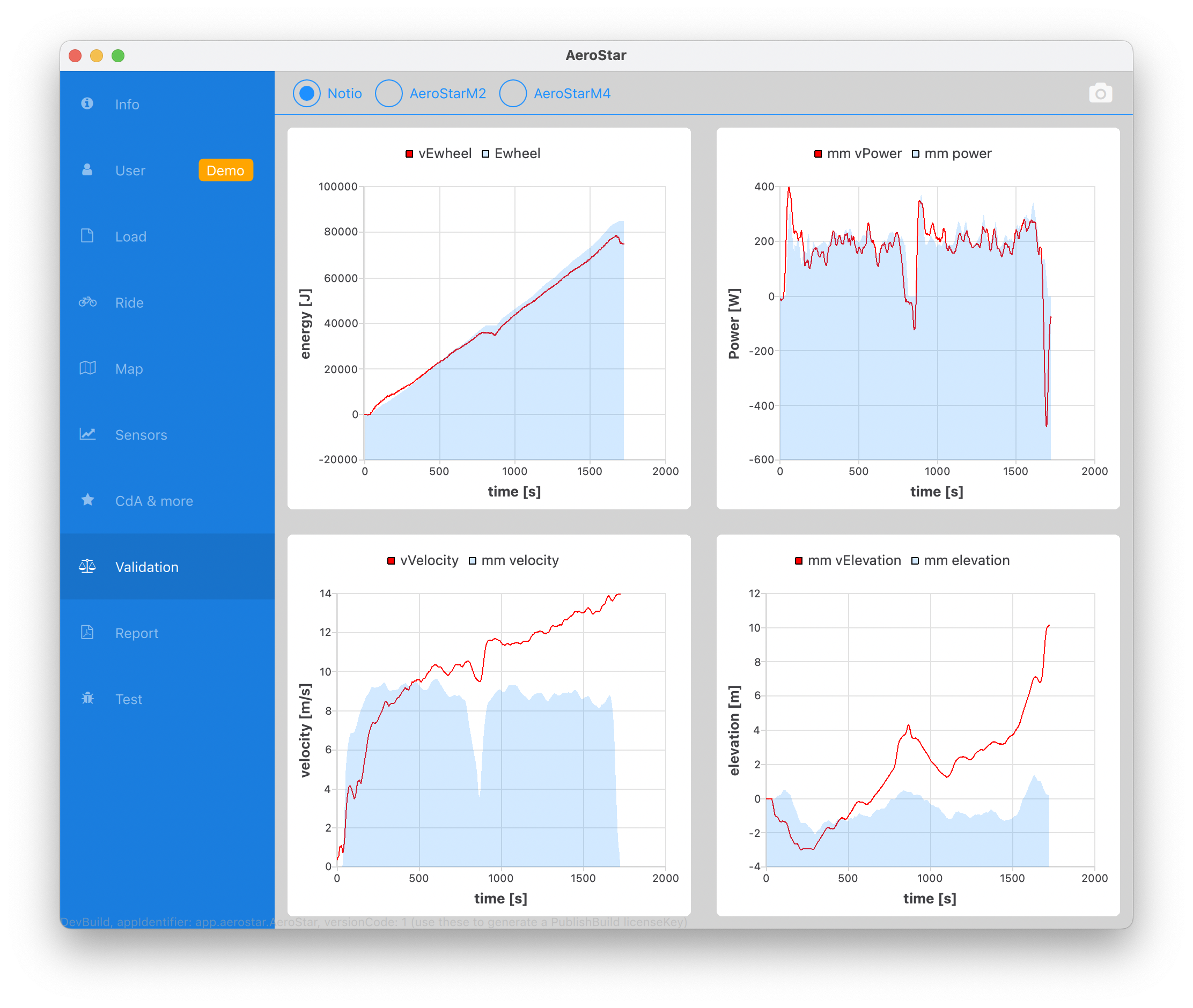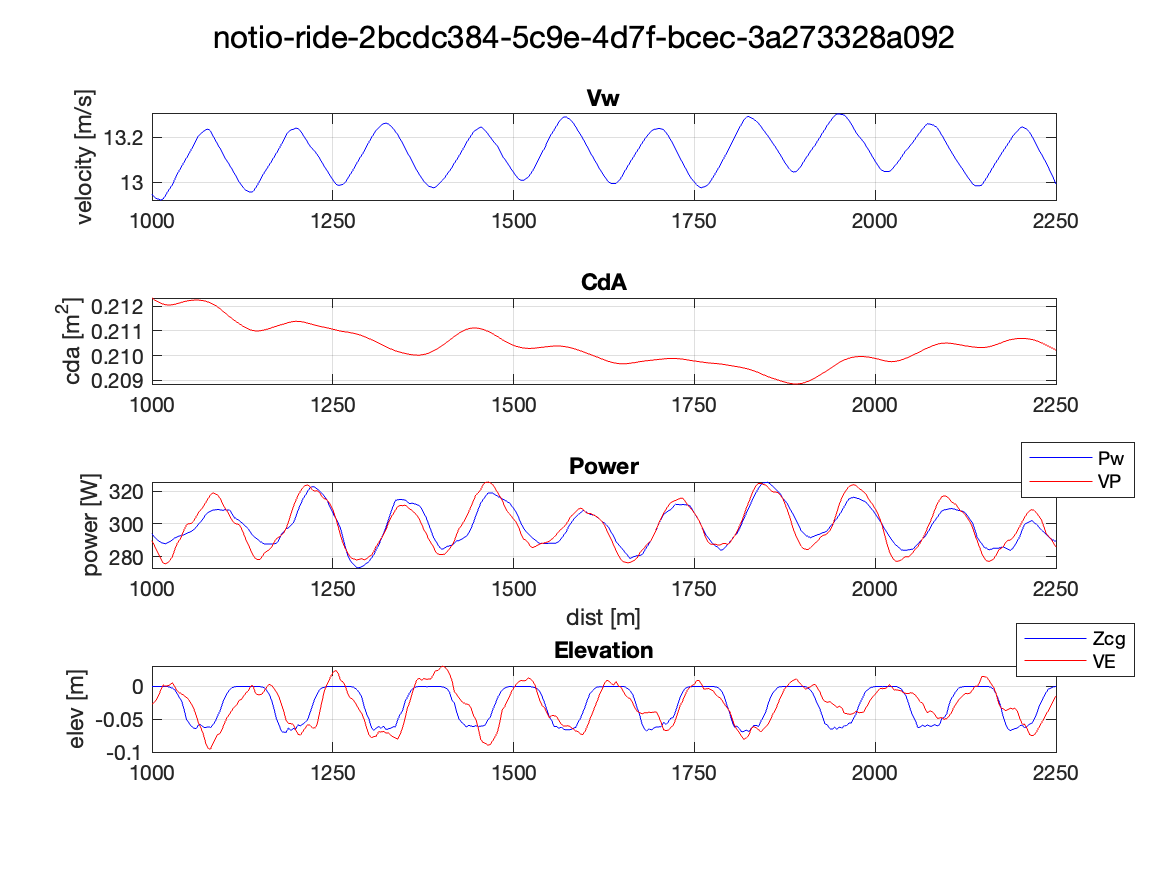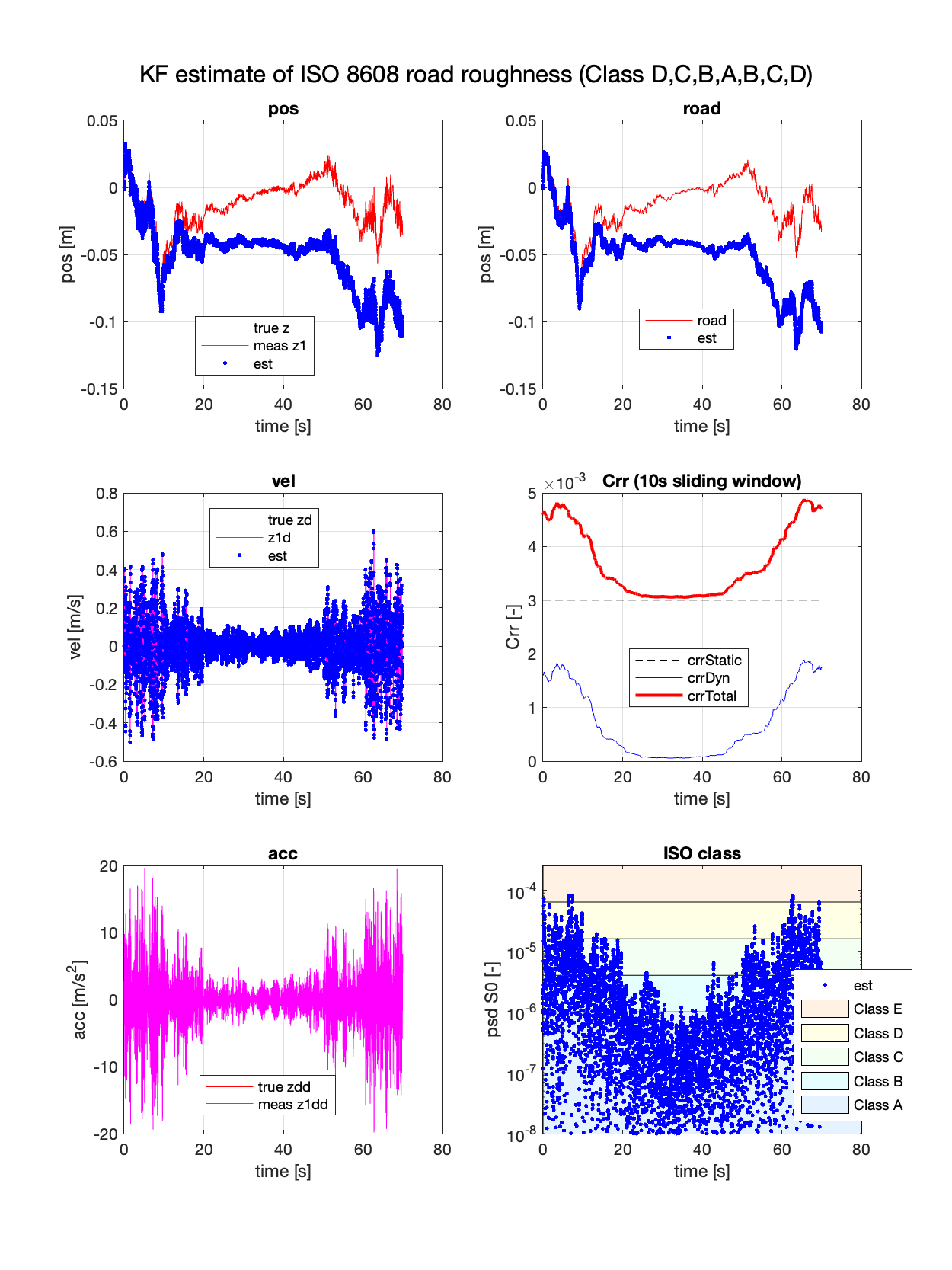Compute your live Crr on different road surfaces
The road's micro- and macrotexture surface is uneven. Your bike is rolling over this uneven surface resulting in vertical vibrations. The energy of the vibrations is lost, so the vibrations increase your effective rolling resistance.
How does RoadStar work?
To show how RoadStar works we first create a synthetic road with varying road roughness, then let RoadStar estimate the road surface that vibrates the bike, and from that estimate the total rolling resistance.
The ISO8608 road surface is modeled as a random walk of colored noise. The "true" road is plotted. To make things interesting, the road quality starts off as Class D, then improves to class A, then degrades to D again.
The motion of the bike and rider are simulated riding over the road. The position, velocity, and acceleration of the bike are plotted. The vertical acceleration would be measured with an accelerometer on the bike.
Now RoadStar is ready to start its calculations! After measuring the acceleration riding over the road, RoadStar solves the inverse dynamics problem to calculate the unknown disturbing road surface using a high-speed Kalman Filter.
RoadStar has now estimated all the dynamics of the system -- the road surface, and the bikes position, velocity and acceleration.
RoadStar calculates the power of the road vibrations, and then an equivalent dynamic Crr with the same power is computed. The total Crr is the sum of the static and dynamic Crr.
Since the road surface was estimated, RoadStar can also calculate the ISO8608 classification where Class A is a good smooth asphalt road, B acceptable, C poor etc ... all the way to a really poor Class H.
The ISO class graph shows that RoadStar accurately estimated the ISO8608 classifications for D-C-B-A-B-C-D. This validates that all the estimated values of the model are self-consistent and accurate!




